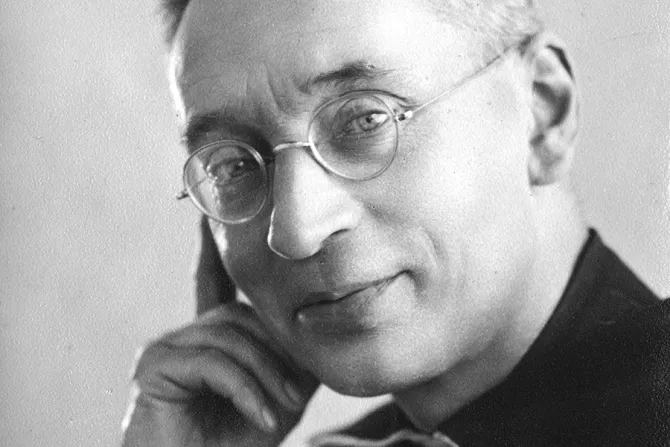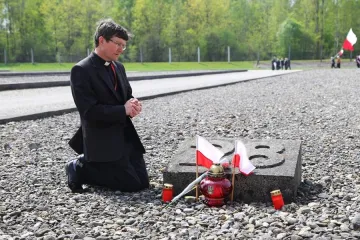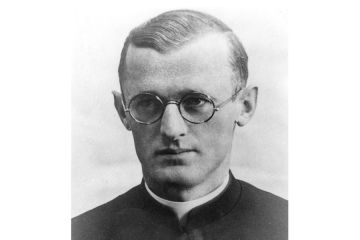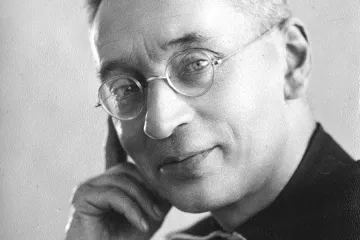Vatican City, Nov 25, 2021 / 04:32 am
Pope Francis has recognized a miracle attributed to the intercession of Titus Brandsma, an outspoken opponent of Nazism martyred at Dachau concentration camp in 1942.
The pope authorized Cardinal Marcello Semeraro, prefect of the Vatican Congregation for the Causes of Saints, to issue a decree on Nov. 25 approving the miracle.
The decision paves the way for the Dutch Carmelite friar’s canonization.
Titus Brandsma, a priest, professor, and journalist, was born Anno Sjoerd Brandsma in Oegeklooster, in the province of Friesland, on Feb. 23, 1881. He entered the Carmelite novitiate in 1898, taking the religious name Titus. He was ordained a priest in 1905.
Following Germany’s invasion of the Netherlands in 1940, Brandsma defended the freedom of Catholic education and the Catholic press against Nazi pressures.
After he firmly opposed mandatory Nazi propaganda in Catholic newspapers, he was arrested in January 1942.
He was transferred to Dachau, once described as “the largest priest cemetery in the world,” on June 19 that year. He died on July 26, following a lethal injection.
He was beatified by Pope John Paul II on Nov. 3, 1985, as a martyr for the faith.
In his homily, the Polish pope praised Brandsma’s “constant vein of optimism.”
“It accompanied him even in the hell of the Nazi camp. Until the end, he remained a source of support and hope for the other prisoners: he had a smile for everyone, a word of understanding, a gesture of kindness,” he said.
“The same ‘nurse,’ who on July 26, 1942, injected him with deadly poison, later testified that she always kept vivid in her memory the face of that priest who ‘had compassion on me.’”
A Catholic priest in Florida told CNA in 2018 that he attributed his miraculous healing from cancer to Brandsma’s intercession.
Fr. Michael Driscoll, O. Carm, was diagnosed with advanced melanoma in 2004. Shortly afterward, someone gave him a small piece of Brandsma’s black suit, which the American priest applied to his head each day.
He underwent major surgery, with doctors removing 84 lymph nodes and a salivary gland. He then went through 35 days of radiation treatment.
Doctors said that his subsequent recovery from Stage 4 cancer was scientifically inexplicable.
Driscoll recalled that his doctor told him: “No need to come back, don’t waste your money on airfare in coming back here. You’re cured. I don't find any more cancer in you.”
(Story continues below)
A congress of theologians recognized the healing as a miracle on May 25 this year. A group of cardinals approved the canonization cause on Nov. 9, submitting their decision to Pope Francis.
Pope Francis advanced several other causes on Thursday.
He recognized a miracle attributed to the intercession of Bl. Carolina Santocanale (1852-1923), known as Maria of Jesus, the Italian founder of the Capuchin Sisters of Immaculate Mary of Lourdes. She was beatified in 2016 and will now be canonized.
The pope also acknowledged the martyrdom of Enrico Planchart, Ladislao Radigue, and three companions, priests killed in hatred of the faith on May 26, 1871, at the time of the Paris Commune, a revolutionary government in the French capital.
The pope also recognized the heroic virtues of the Italian Bishop Antonio Bello (1935-1993), who he recently described as “a prophet in the land of Puglia,” the region at the southeastern tip of the Italian Peninsula.
In addition, he approved the heroic virtues of:
— Juan de San Pedro y Ustarroz (1564-1615), known as John of Jesus Mary, a Spanish Discalced Carmelite.
— Giorgio Guzzetta (1682-1756), an Italian Oratorian priest known as the Apostle of the Albanians of Sicily.
— Natalina Bonardi (1864-1945), founder of the Suore di Santa Maria di Loreto, a religious congregation based in Vercelli, Italy.
— Maria Dositea Bottani (1896-1970), superior general of the Institute of the Ursuline Sisters of the Immaculate Virgin Mary of Gandino, Italy.
— Odette Vidal Cardoso (1931-1939), a Brazilian girl who died in Rio de Janeiro at the age of nine.






